Today we’re going to talk about donkey “dongs” and tuna boats and statistical significance. It’s 4005 time, folks!
And for those of you looking bewildered right now, “donkey dong” and “tuna boat” are the less than affectionate nicknames bestowed upon the 4005 by John Hall and factory employees respectively. As to statistical significance …we’ll get to that in a bit.
Introduced in 1965, the 4005 was Rickenbacker’s third bass model. And believe it or not, it was the company’s highest production bass model from launch through 1967–by a significant margin. That said, basses made up a MUCH lower percentage of total production then than now, so it’s not like there are thousands floating around out there. They are in fact pretty rare.
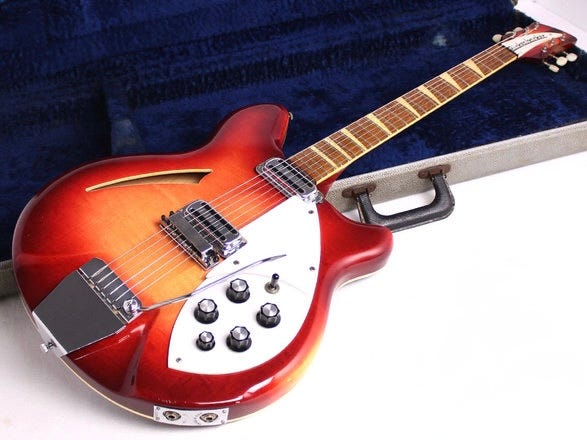
Clearly inspired by the new round top 360 introduced in 1964, the deluxe 4005 was Rickenbacker’s first and only semi-hollow bass. Yes yes, the 90th Anniversary 4005XC was a completely different animal, but it still wore the 4005 label so there!
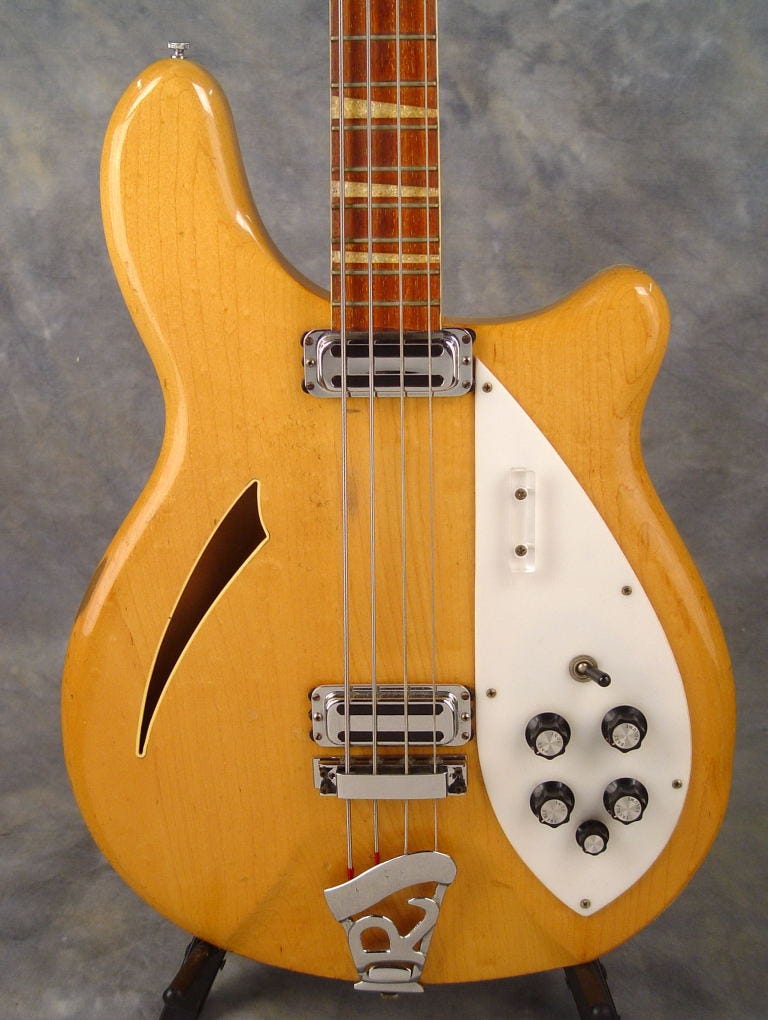
So yeah…that upper horn is a bit suggestive, no? I mean, it’s required for balance’s sake, but it is quite…long. Maybe a bit like a…well, you know the rest.
Despite its 360 inspiration, the 4005 kept the 4000/4001’s 20 fret neck and cresting wave headstock. Unlike the 4000/4001, however, the neck would be a three piece maple/walnut/maple sandwich with walnut wings—like the 360–instead of a one piece maple neck with walnut wings.
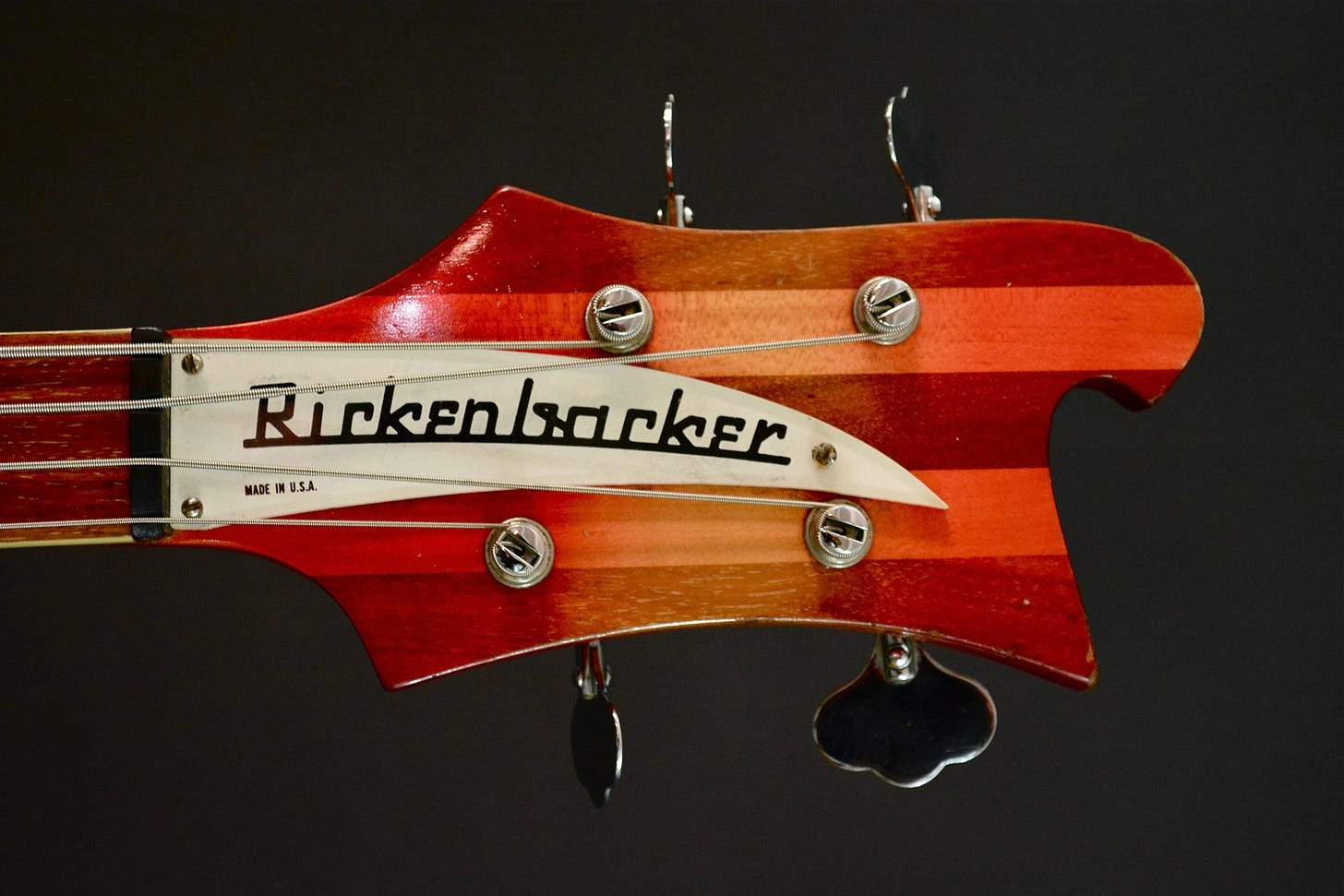
The 4005 got its own four slot version of the brand new “R” tailpiece. Like the original 4000, it utilized the standard Rickenbacker guitar bridge frame, but unlike the 4000 it was drilled for only four saddles.
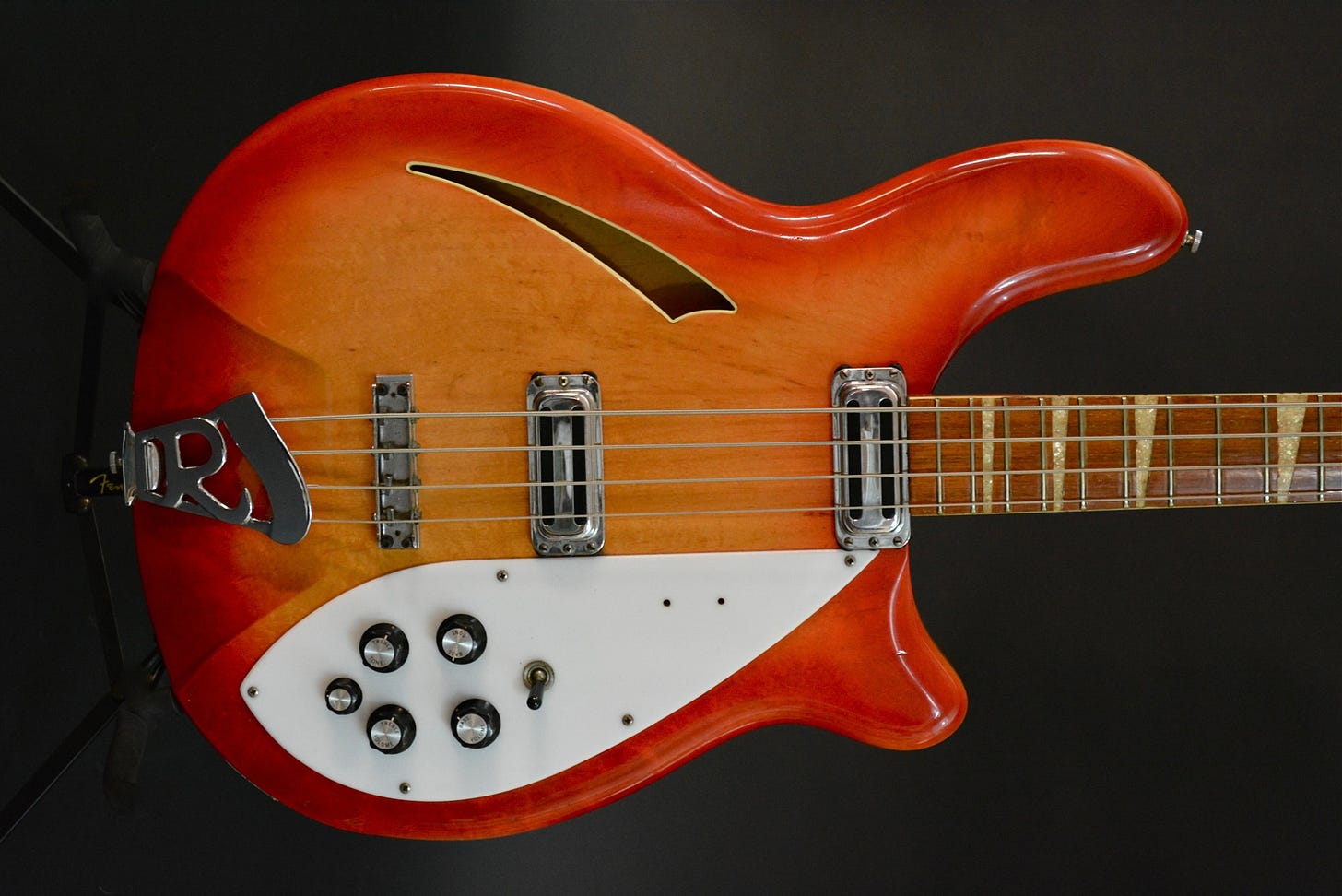
Notice anything unusual about the guitar above? On a handful of early guitars the bass pickup was placed in roughly the same position as on the 4000 and 4001, as opposed to right by the bridge as would be found on most production models.
That bridge pickup is also, notably, a toaster rather than the horseshoe found on the solidbody basses. That, plus the pickup locations—not only is the bridge pickup much closer to the bridge than on the 4001, but the neck pickup is also closer to the neck—give the 4005 a…distinct sound.
With a boomy neck pickup and a biting bridge pickup, it can be difficult to get a good sound out of it. Luckily it has a unique-for-a-bass party trick: a blend knob. It helps…some?
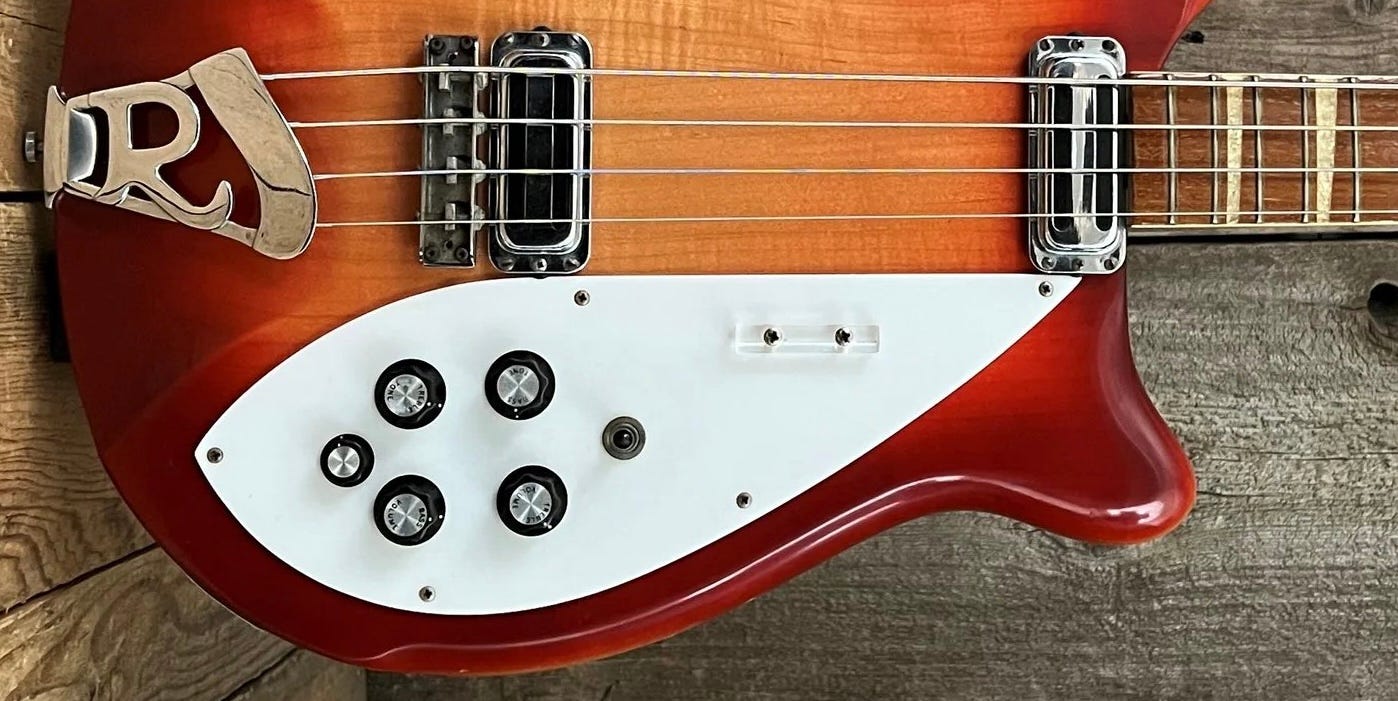
Right out of the gate Rickenbacker added ANOTHER party trick to the 4005: a 6-string version.
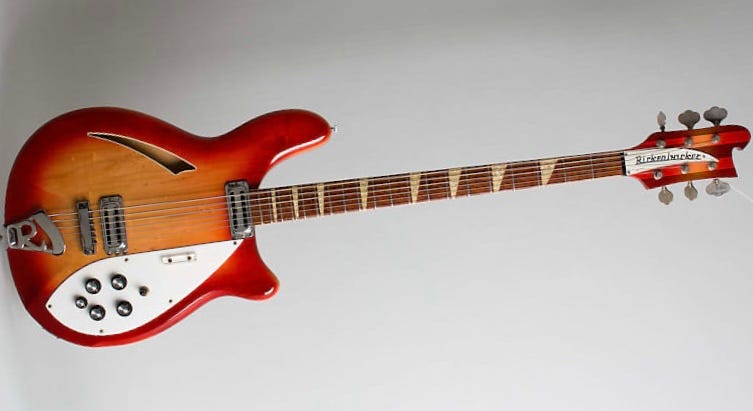
Also debuting in 1965, the 4005/6 added a high B and E string, and stretched the headstock to hold two more tuners. A standard 6-saddle guitar bridge and “R” tailpiece replaced the 4-string’s modified versions. The 4005/6 would be an “official”’price list guitar, although in reality only a few were made between 1965 and 1968. But if six strings wasn’t enough for you…
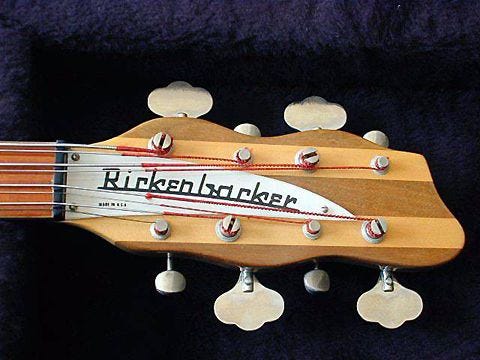
Potato-head! Never a “price list model”, a handful of 4005/8s were produced in 1967. The…unique looking headstock was actually a pretty elegant solution, alternating bass tuners for the low strings and guitar tuners for the octave strings.
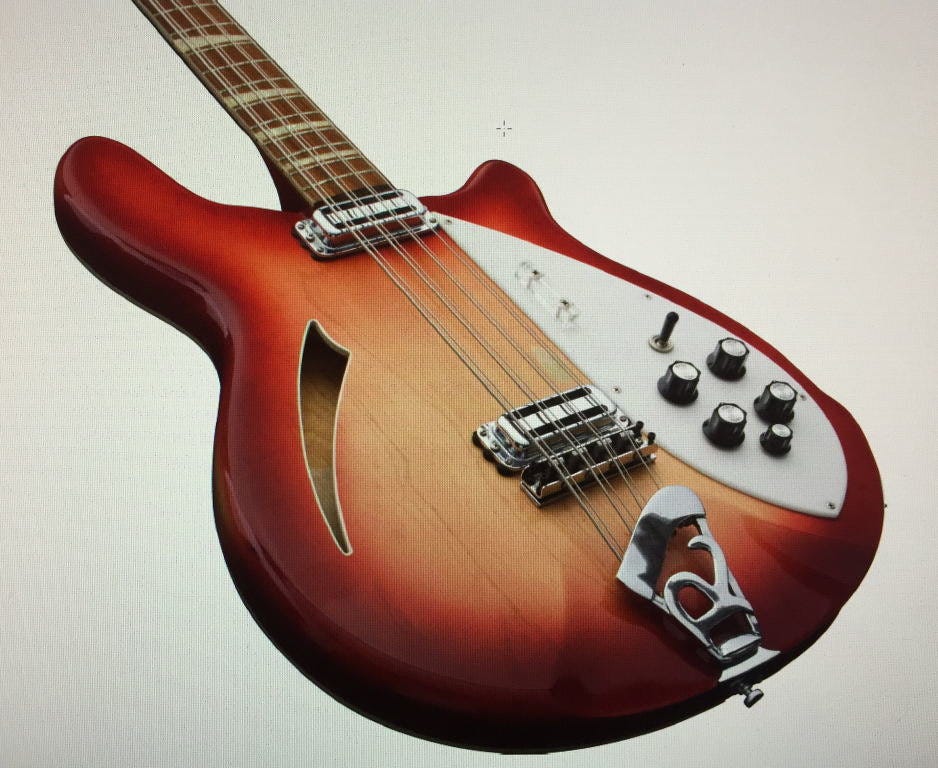
Now, after the round top 360 was introduced, demand for the old “flat top” double-bound 360 still existed. While not listed on the price list, the “old style” body could be custom ordered, and today such a guitar is referred to as a 360OS (old style).
So starting in 1966 Rickenbacker offered the same custom order option for the 4005–a flat topped, double bound version. Since the round top version of the 4005 is technically the “old style”, such guitars are referred to today as 4005WBs (with binding).
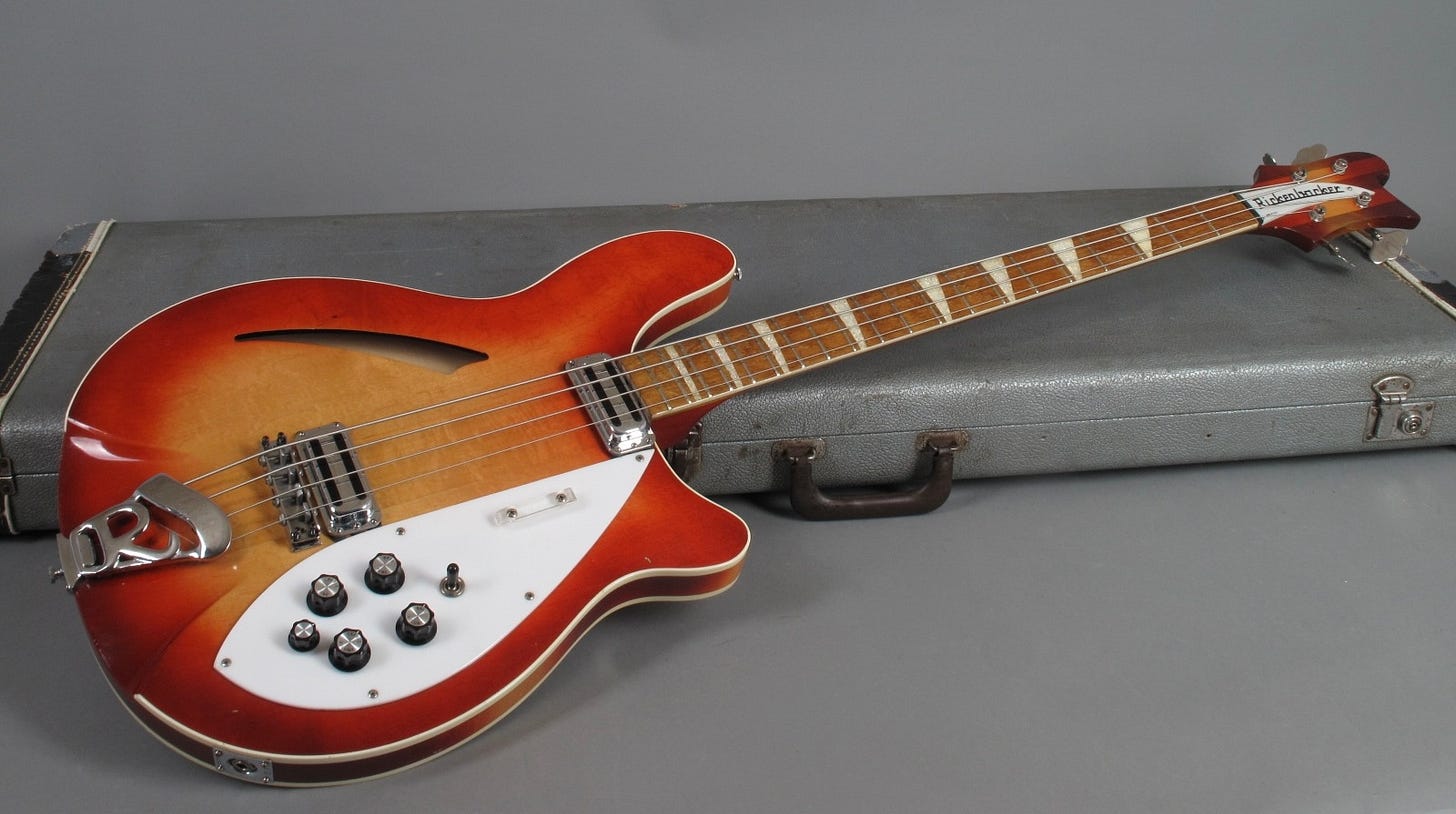
Just like the 360OS, plain white binding was used on the top and back of the 4005WB instead of the checkered binding found on the back of the “standard” 360 and 4005. WBs would be offered along side the standard guitar through 1974.
There’s one last 4005 variant we need to mention: the 3261. Because there has to be a Rose Morris version, right? Produced in 1967, the 3261 replaced the 4005’s bound cats eye/slash sound hole with the traditional Rose Morris f-hole. The relationship between Rose Morris and Rickenbacker had soured to the point where most of these guitars were shipped to Italy.
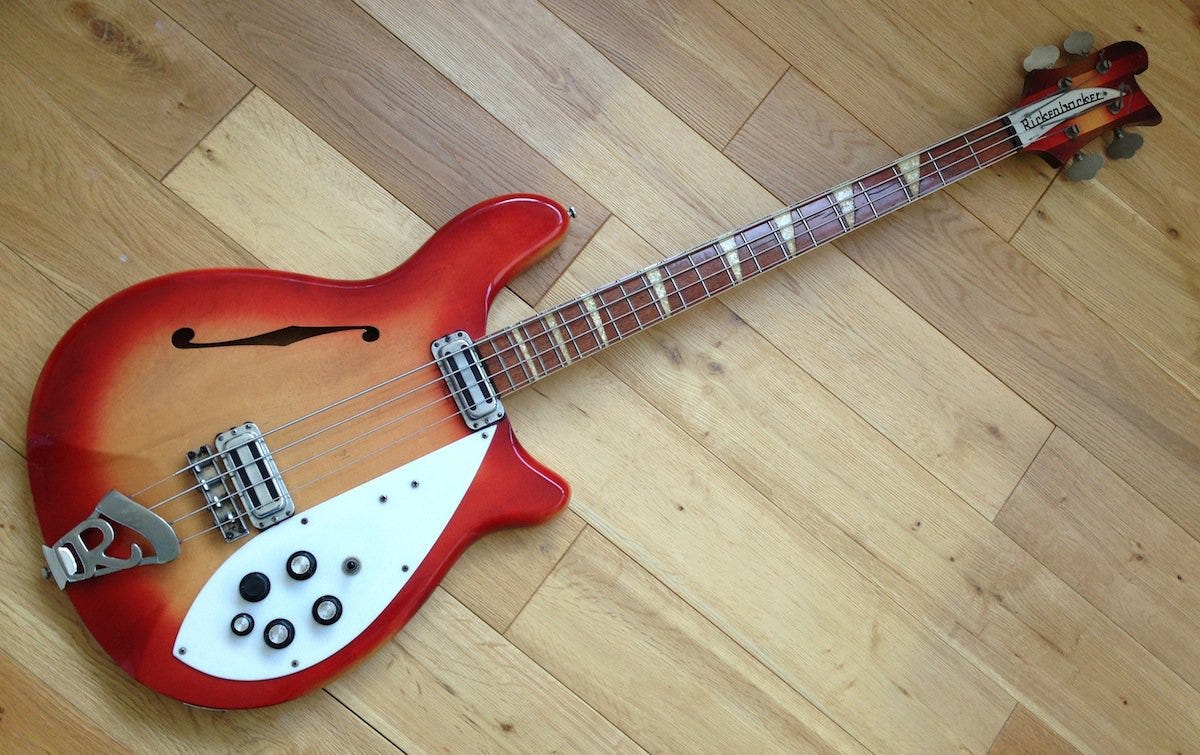
So that’s the original 4005 family. And from 1965 to 1967, they cranked them out. But…they’re just not great basses. Beautiful? To some, absolutely. But not great instruments. We’ve already talked about the tone issues, but they’re also just massive beasts. Unwieldy and not at all comfortable. Demand dropped in 1968, only a handful were made in 1969, and then…radio silence for a few years.
Well…with one slight blip. A handful—5 per John Hall—4005 Lightshows were built in 1970-1971. We’ll talk more about those when I finally get around to my Lightshow article!
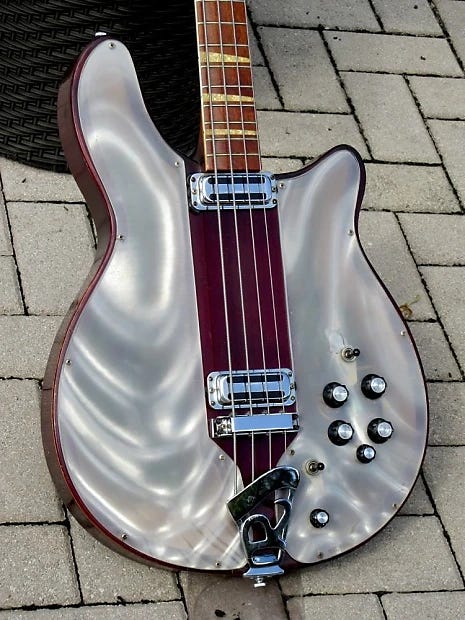
In 1974 the 4005 would return in both standard and WB form. A lot had happened in the years since their last run, and the 1974 version would have a number of new, “modern” features.
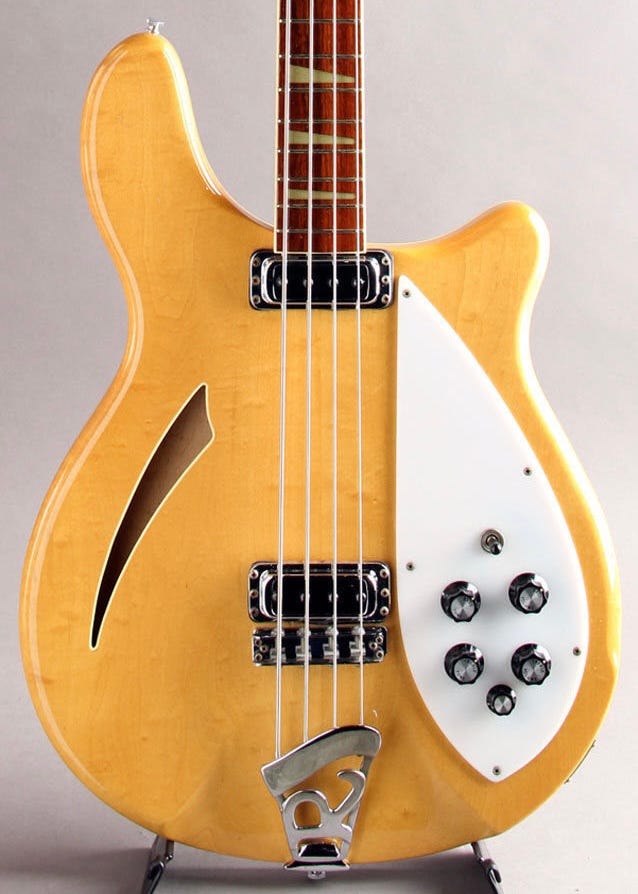
The toaster pickups were replaced with button top Higains. The full-width crushed pearl triangle inlays were replaced with inset poured inlays. The tug bar was gone. And the neck construction changed to the same skunk striped three piece maple/shedua/maple with maple wings found on the 4000 and 4001 basses, with binding at the bottom of the fingerboard.
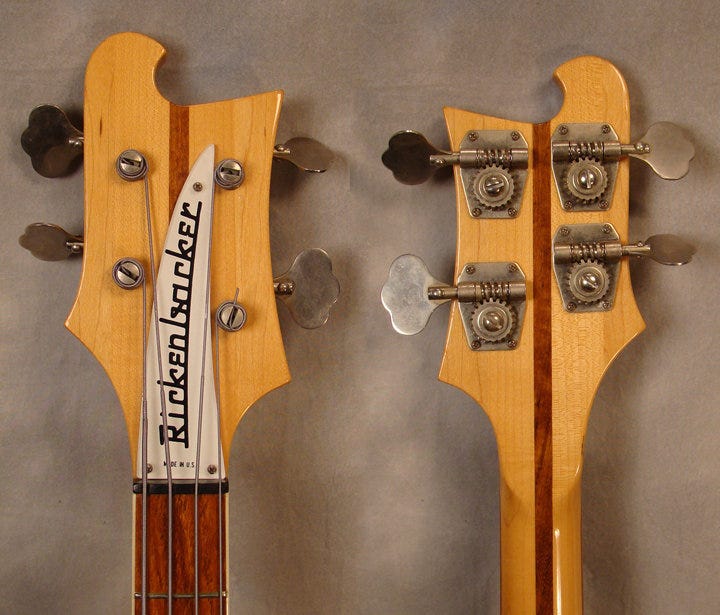
A few more guitars would be made in 1975 with a new standard feature: Rick-O-Sound. Believe it or not, stereo wiring had not been available even as an option up until late 1974. And then…five more years of radio silence.
But in 1979 they were back! The 1979 4005s had a couple minor changes—mostly cosmetic. The Kluson tuners had the same black plastic bushings as found on the 4001, and the truss rod cover had changed from backpainted plexiglass to raised letter injection molded—without a model number stamp.
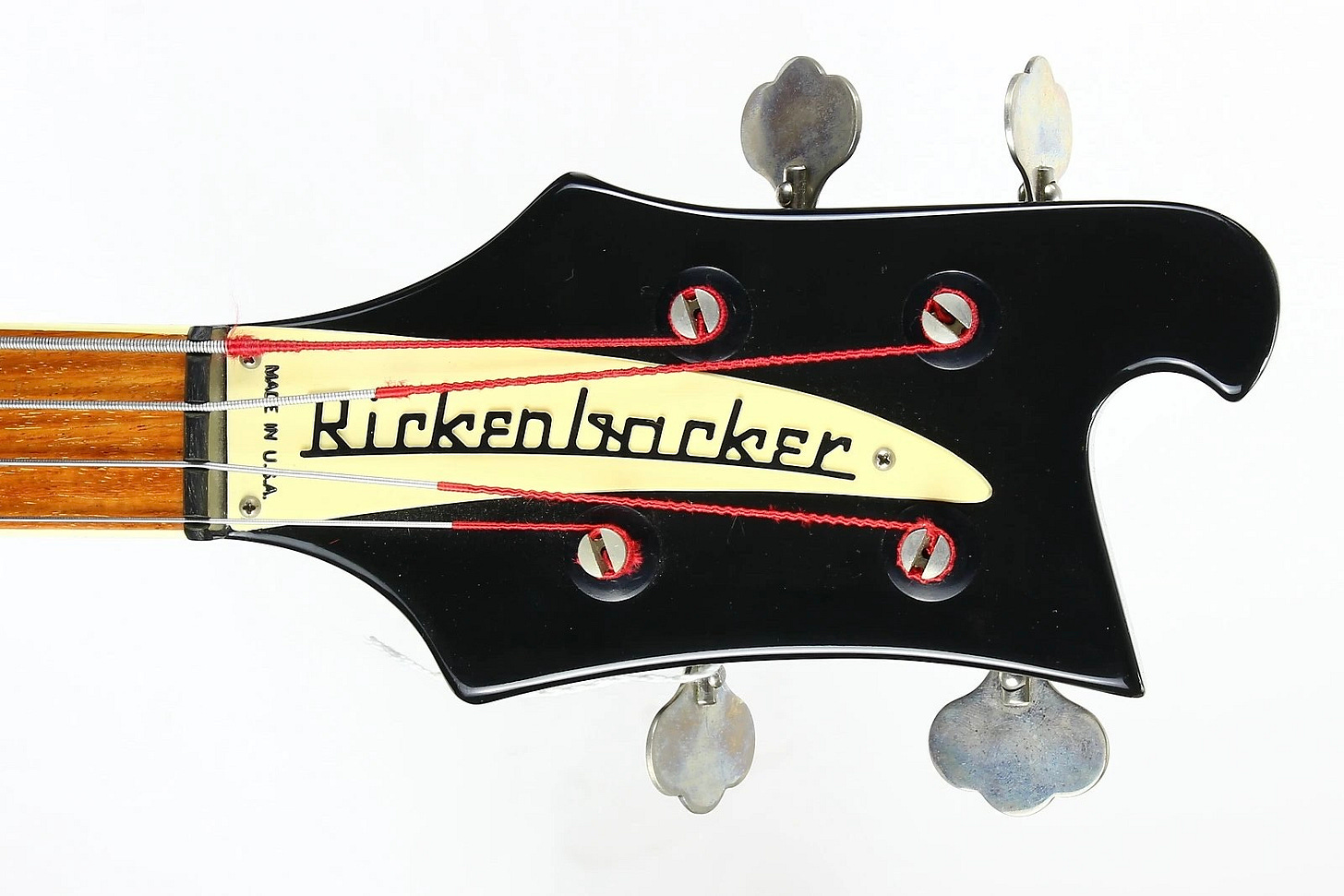
But if you thought they were heavy before! Tops had gotten thicker over the years, and the 1979 guitars were beasts, coming in at almost 10 pounds. A small run occurred in 1981, a couple leftover bodies got finished out in 1982, and then the 4005 was no more.
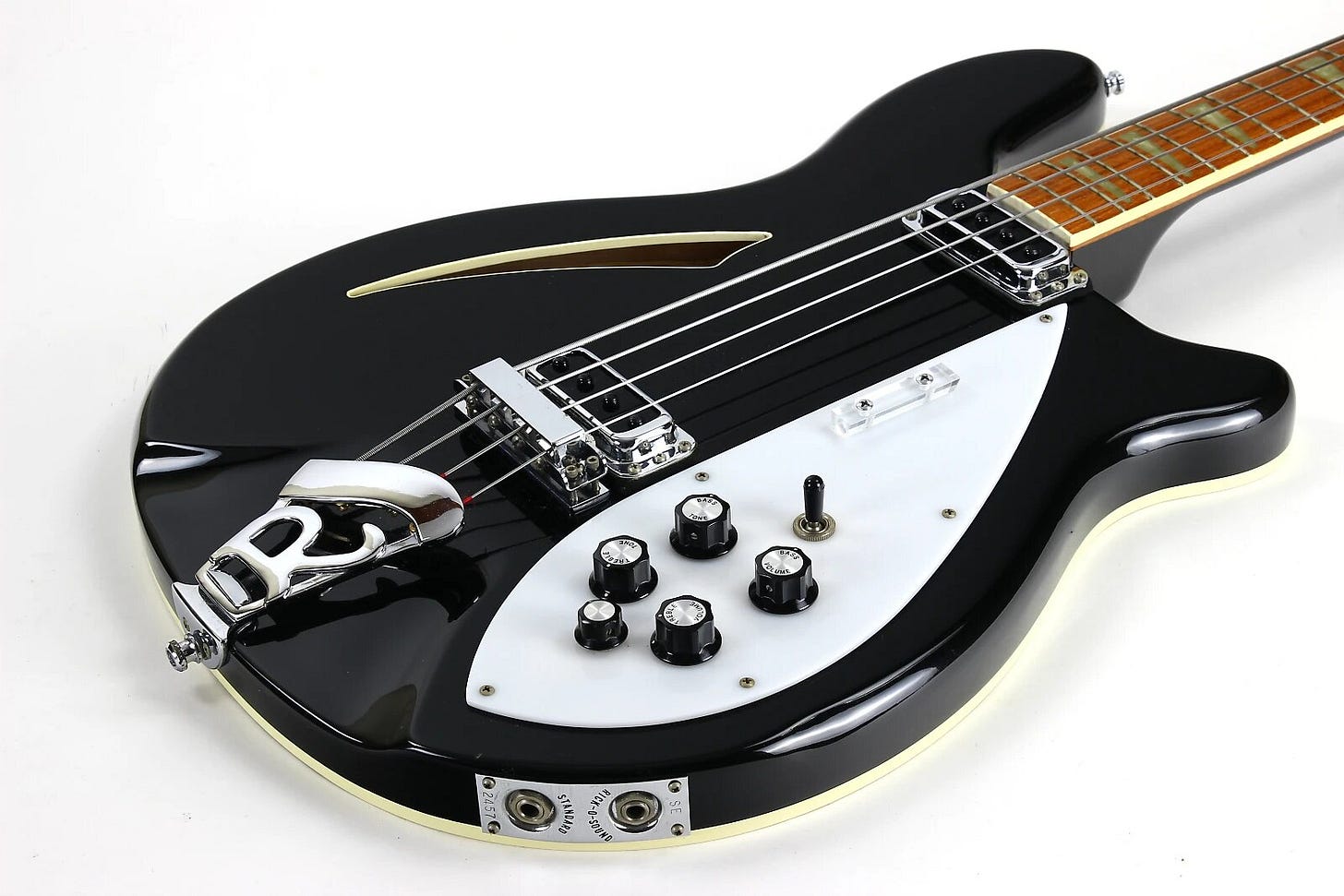
They stayed on the price list until John Hall bought the company in 1984 and pared the list way down—including the 4005. And Hall made it very clear many times that the 4005 was not gonna return on his watch.
Now I remember in the late 80’s you couldn’t give these things away. But as time passed, people forgot how…not great they actually were. That fact got overshadowed by the facts that they looked pretty cool, they’re fairly rare, it was abundantly clear there wouldn’t be more…and the market gradually priced them out of reach for most. And nothing makes people want something more than not being able to have it! The legend grew.
My wife is a marketer. And one of the things she always tells me is “your gut is not statistically significant”. Fair enough. I’m gonna extend that principle to say “the loudest voices on the internet chat boards are not statistically significant”. And the boards were full of loud people who wanted a 4005. Hell, I might have even been one of them!
And by the 2020s John Hall had stepped back and left the day to day in Ben’s hand. And—big props to Ben—Ben has proven to be a lot more responsive to the fans and more willing to take a chance than his dad had been in recent years. So the internet went crazy when Ben teased the potential return of the 4005 in late 2022. And when he announced it was happening for real in early 2024…well, he broke the (Rickenbacker) internet.
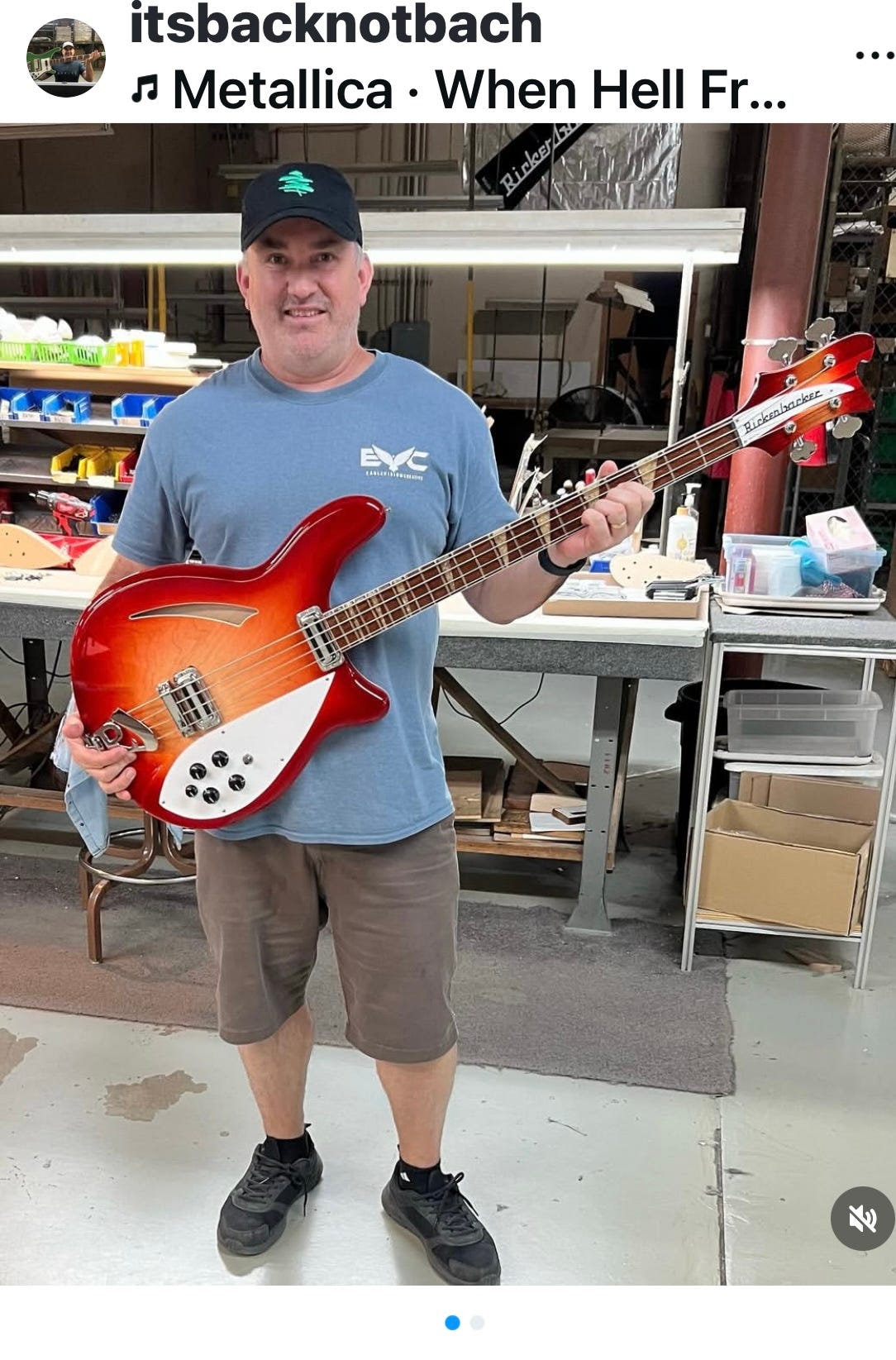
There’s lots to like about this guitar, dubbed the 4005V. It’s a pretty darn faithful reproduction of the 60s original—including the first “normal production model” use of crushed pearl triangle inlays since 1973 (not counting the limited production window 90th Anniversary models).
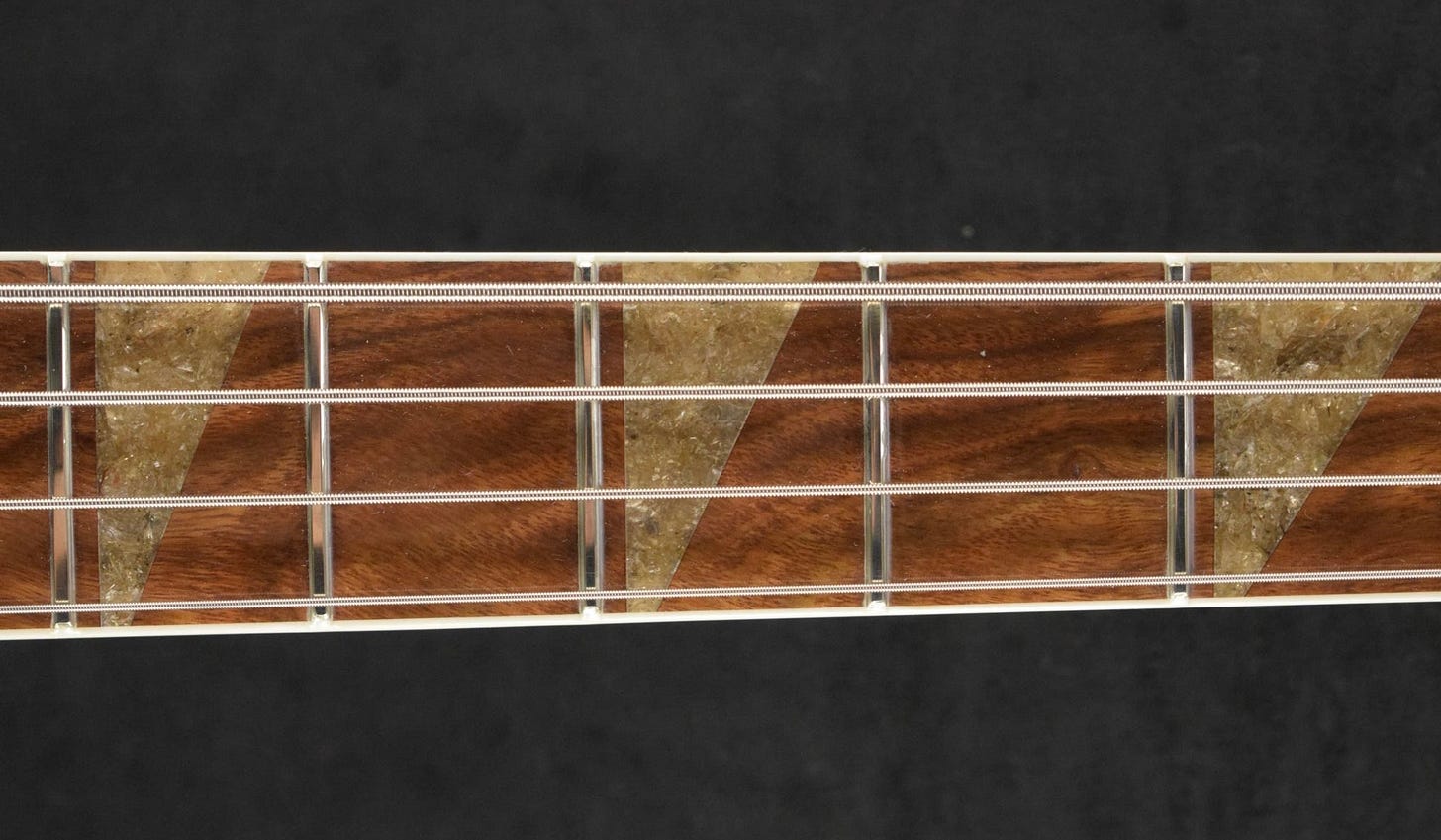
Are they maybe a little bit “browner” than the originals? Sure. But considering the old ones are made of unobtainium, they’re not bad at all. They’re a heck of a lot better than nothing at all!
Other differences from the original: Rickenbacker had discontinued the original’s silver-topped knobs in 2020 so it came equipped with black vintage KK style knobs. The neck was the same skunk striped three piece neck with walnut wings found on the contemporary 4003. It should also be noted, as John Minutaglio reminded me, the normal six saddle “R” tailpiece was used, giving the A and D string an awkward kink towards the bridge. Other than those “minor” quibbles…pretty faithful!
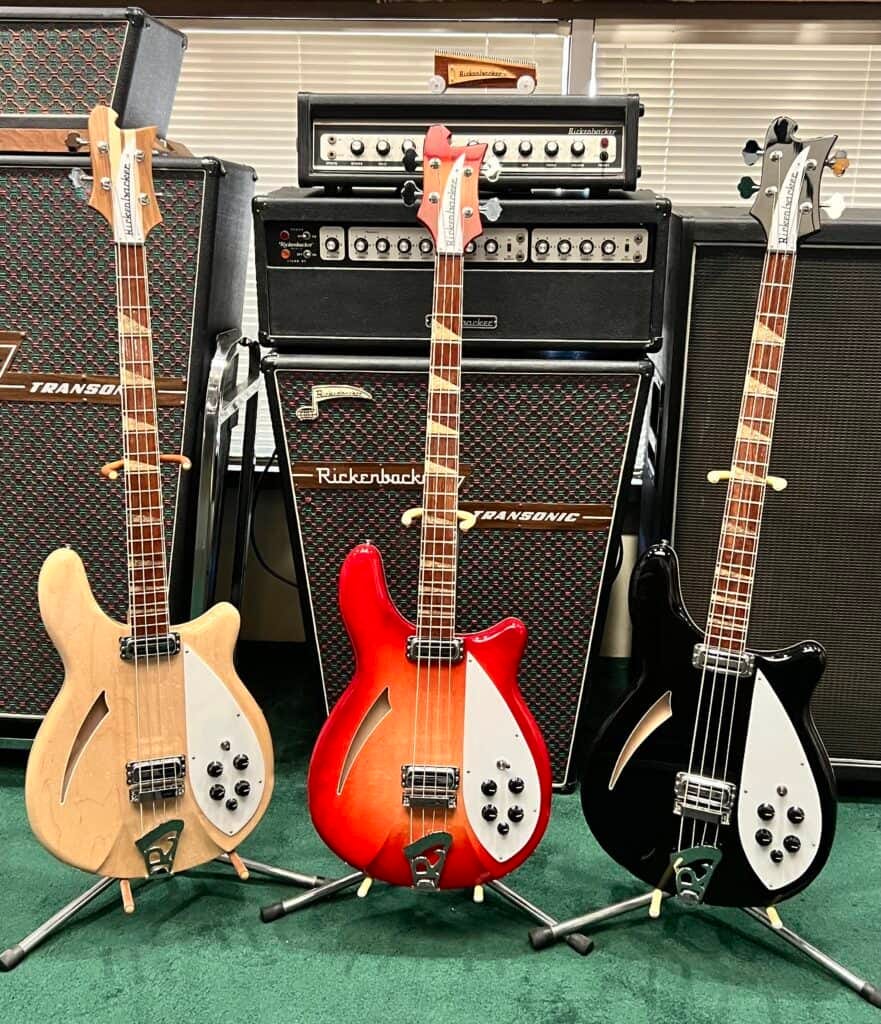
They were pricey, though, at an MSRP of almost $5000 and a street price of around $3800. Cheaper than originals, for sure, but still a quite expensive guitar. And you know, still not a great design for the same reasons we’ve already discussed.
Still, all those people who had clamored for one for years snapped them up. For most of 2024 Rickenbacker couldn’t get them to dealers fast enough. And then, towards the end of the year…they hit market saturation. The reality of “the loudest voices on the internet are not statistically significant” reared its ugly head. As of this writing—August 2025–none have been made in about a year and there are still plenty of new ones on the shelves.
And maybe that’s okay! A one to two batch per year guitar can still be financially viable. Time will tell if there’s an ongoing market/demand for this guitar. But it does make clear once again that when you give the people what they want, make sure you have a statistically significant idea of how many people there actually are!
I didn’t talk about the 2021-2023 90th Anniversary 4005XC here because it’s a 4005 in name only. You can learn all about it here if you want to.
Want to learn more about…everything else? Check out the rickenbacker101 site map and see what’s already been covered! Have a suggestion about what we should tackle next? Drop it in the comments and we’ll add it to the queue.




I first became aware of the 4005 via the cd insert for the Stone Roses' debut album (though over a decade after its release, when I was in college) and have long held a fascination. As Andy noted, though, they've only ever become exponentially more expensive since then, and given their scarcity I've never even seen one in person. I'd still really love to own one one day!
Great read Andy. Minor feedback/stuff:
- why no love for the 3261?
re: "Other than those minor quibbles…pretty faithful!"
well, they have 6 string R's which is why the strings look 'bent' coming out of the R... :(
re: "In 1974 the 4005 would return in both standard and WB form. A lot had happened in the years since their last run, and the 1974 version would have a number of new, “modern” features."
The '74's had red dots!
re: "A few more guitars would be made in 1975 with a new feature: Rick-O-Sound."
The '74's have Ric-o-sound!